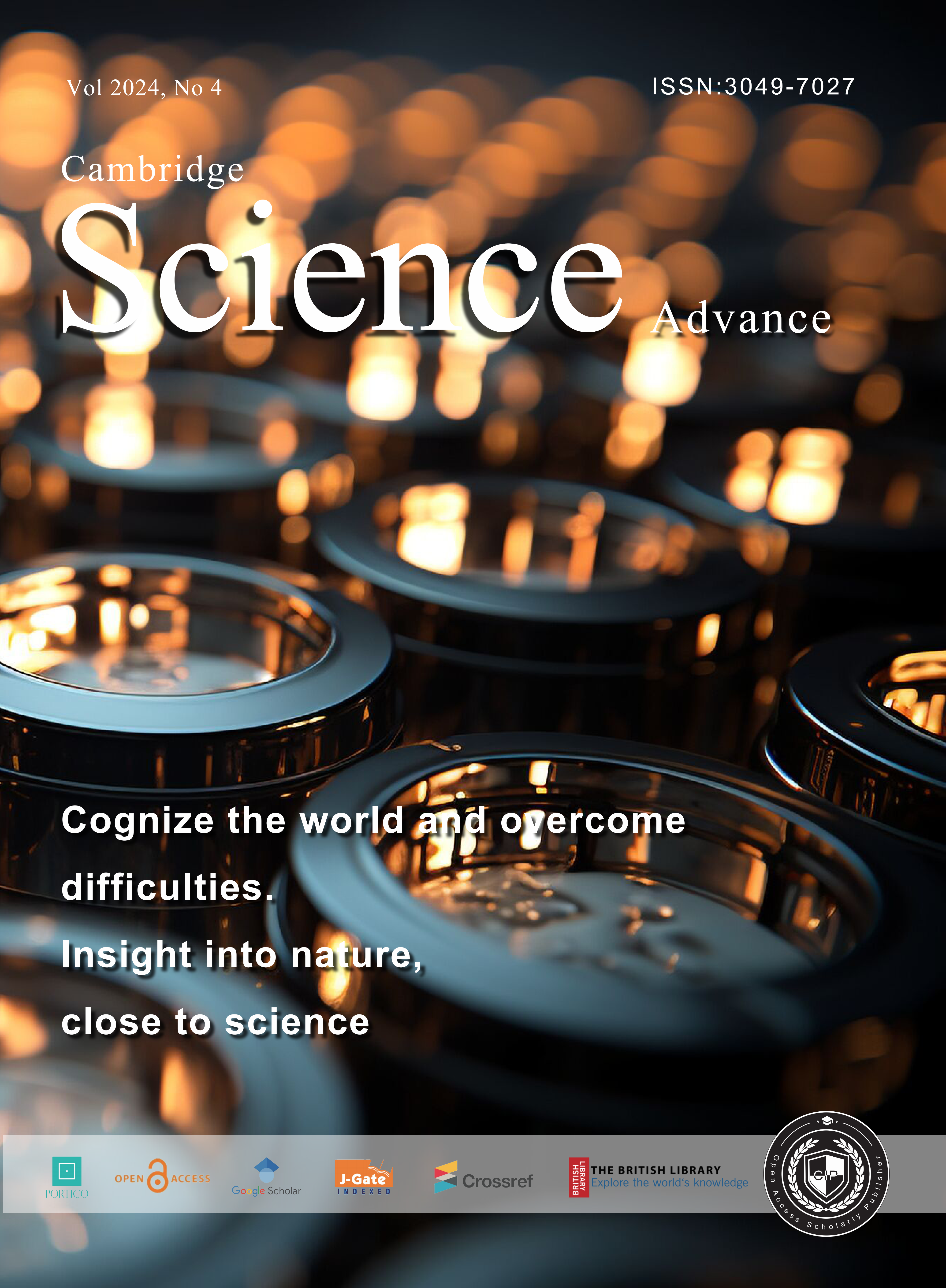Published 13-09-2024
Keywords
- TCM Jiu Dan Syndrome,
- Animal Model, Ethanol,
- Carbon Tetrachloride,
- Aminogalactose, α-Naphthylisothiocyanate
Copyright (c) 2024 Cambridge Science Advance

This work is licensed under a Creative Commons Attribution-NonCommercial 4.0 International License.
How to Cite
Abstract
Objective: To establish an experimental animal model that conforms to the traditional Chinese medicine (TCM) syndrome of Jiu Dan. Methods: Based on the historical discourses of TCM practitioners on the Jiu Dan syndrome, the study deeply analyzed the mechanisms behind the formation of Jiu Dan syndrome. Taking into full consideration the clinical diagnostic basis of the TCM syndrome animal model, which includes symptoms, etiology, treatment, related factors, and objective indicators, a high-fat diet combined with free access to ethanol was used to induce spleen and stomach deficiency in rats, followed by the induction of liver injury using carbon tetrachloride, aminogalactose, and α-naphthylisothiocyanate. By observing the general biological status and biochemical indicators of the rats, the study screened the three chemical modeling drugs, carbon tetrachloride, aminogalactose, and α-naphthylisothiocyanate, to determine the modeling factor combination that could simulate the formation mechanism of the Jiu Dan syndrome, and established an animal model that meets the characteristics of the Jiu Dan syndrome. Conclusion: Ethanol and α- naphthylisothiocyanate were selected as the modeling drugs for the TCM Jiu Dan syndrome animal model.
References
- Tong Xin, Zhao Fa Zheng, Tong Zilin, et al. An Analysis of Effective Prescriptions for the Treatment of Jiu Dan in Traditional Chinese Medicine [J]. Chinese Journal of Emergency Medicine, 2015, 35(7): 76-77.
- Tian Delu, Ding Xia. A Review of the Study on Alcoholic Liver Disease [J]. Journal of Beijing University of Chinese Medicine, 1999, 22(1): 10-14.
- Sun Jin hui, Zhao Kun peng, Sun Antao. An Exposition of the Therapeutic Approach to Alcoholic Liver Disease [J]. Journal of Traditional Chinese Medicine, 2012, 40(1): 1-4.
- Chen Xiaoye. Hypothesis and Evaluation of the Diagnostic Basis for Syndrome Animal Models [J]. Chinese Journal of Medicine, 1987, 2(1): 50-56.
- Zhang Wei, Lu Xu Xiang, Jia Xinhua, et al. A Cluster Analysis Study on the Regularity of Traditional Chinese Medicine Syndromes in Pulmonary Diseases [J]. Journal of Traditional Chinese Medicine, 2012, 40(5): 66-68.
- Zhang Jiu Hong, Li Wen Quan, Zhang Shu, et al. A Study on the Correlation Between Traditional Chinese Medicine Syndromes of Interstitial Lung Disease and Cellular Characteristics of Bronchoalveolar Lavage Fluid [J]. Journal of Traditional Chinese Medicine, 2014, 42(4): 37-39.
- Wang Xijun, Sun Wenjun. A Metabolomic Study of CCL₄-Induced Liver Injury in Rats and the Interventional Effect of Yin Chen Hao Tang [J]. World Science and Technology - Modernization of Traditional Chinese Medicine, 2006, 8(6): 101-106.
- Tiegs G, Hentschel J, Wendel A. T Cell -dependent experimental liv- er injury in mice inducible by Concanavalin A[J]. Clin Invest,1992, 90:196-203. DOI: https://doi.org/10.1172/JCI115836
- Dawei C, Robert J, Zeytun A, et al.CD⁴-deficient Mice Exhibit Enhanced Hepatitis after Concanavalin a Infection Evidence for Involven-ment of CD⁴4 in Activaion induced Cell Death[J]. Immunol, 2001,166(10):5889-5897. DOI: https://doi.org/10.4049/jimmunol.166.10.5889
- Sehaffner F, Sehambeck HH, Hutterer F, et al. Meehanism of cholestasisα-naphthylisothiocyanate -induced jaundice J. Lab Invest,1973,28: 321-331.
- Tong Xin, Zhao Fazheng, Tong Zilin. Research on the Therapeutic Effect of Huang Lian Wen Dan Tang on Rats with a Jiu Dan Model [J]. Chinese Medicine Information, 2015,32(3): 52-54.
- Turchan J, Przewlocka B, Toth G. The effect of repeated administration of morphine, cocaine and ethanol monolayer and delta opioid receptor density in the nucleus acumbens and striatum of the rat[J]. Neuroscience,1999,91:971-977. DOI: https://doi.org/10.1016/S0306-4522(98)00637-X
- Niu Fengyun, Tian Qi ling, Wu Chun ping. Preliminary Exploration of the Animal Model for Gastric Ulcer of Spleen-Stomach Deficiency and Cold Syndrome [J]. Chinese Journal of Integrated Emergency Medicine, 2005,12(2):84-86.
- Tong X. Evaluation study on urine metabolmics in Yin Huang rat model[J] Chinese Jourmal of Integrative Medicine,2011,12(5):369-375. DOI: https://doi.org/10.1007/s11655-011-0728-9
- Tong Xin, Tong Zilin, Zhao Fa Zheng. Current Status and Prospects of Animal Model Research on Yin Huang Syndrome in Traditional Chinese Medicine [J]. China Medical Guide,2015,12(16): 43-45.

